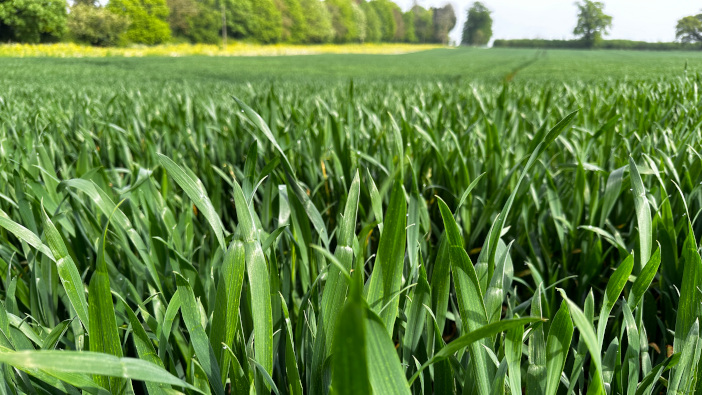Growers are being urged to weigh up the crop potential with input costs when considering their T2 cereal fungicide sprays.
Dr Aoife O’Driscoll, plant pathologist at NIAB, said: “In terms of disease pressure in current crops, it’s a mixed bag. From what we’ve heard and from what we’re seeing on the ground when it comes to septoria, it seems to be a bad year for it.
“There is also a lot of brown and yellow rust being reported, but the issues of mildew and eyespot are not so prominent.”
T0 applications were abandoned in many cases due to the weather and ground conditions, while the timings of T1 applications have also been a challenge.
According to Mike Ashworth, cereal fungicide product manager at Corteva Agriscience, this will impact product choice for T2.
“Wet conditions have exacerbated background levels of septoria in crops and users need to consider their choice of product,” he said.
“It may be that curative activity is needed on top of the requirement for long-term protection to ensure the plant is able to fight disease during the key yield-building weeks ahead.”
He added that growers will also need to consider the return on investment from any T2 applications.
“This year it’s important to match fungicide spend to the potential of the crop. Where crops have limited potential growers are going to be looking for value for money in terms of disease control and product reliability.”
Mike highlighted the company’s Univoq fungicide, containing the active Inatreq, which protects the crop for up to six weeks after application and has shown good results against septoria and rusts.

Aoife said: “This season growers will be really looking at the cost of their programme and how much of a return they are likely to get from their investment, and Univoq should have a leading role to play. For many years in our trials, it consistently shows excellent disease control which transfers into a yield uplift.
“For example, in years like 2023 where a dry June saw disease stopped in its tracks following T2 applications, Univoq still added around 0.3t/ha over its currently available competitors. In wetter years where the pressure is on to keep flag leaves clean, this yield advantage can reach up to 0.7t/ha.”
Nick Anderson, technical director at Velcourt, added: “Trials have shown us that Inatreq is one of the most effective active ingredients on the market against septoria.
“Year on year, septoria is the disease most likely to cost us money, so to that end, we will be using Univoq at T2 in many instances.
“We believe that using the Inatreq active molecule will deliver the most cost-effective disease control at T2 in the majority of situations.”
For more information go to www.corteva.co.uk


